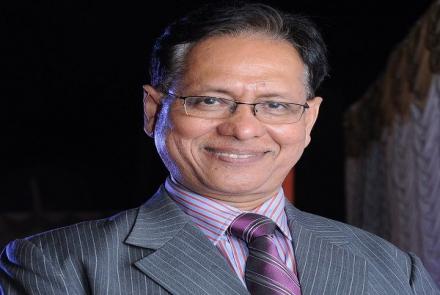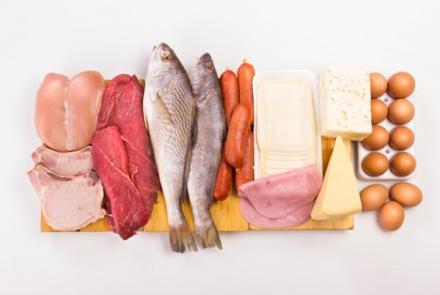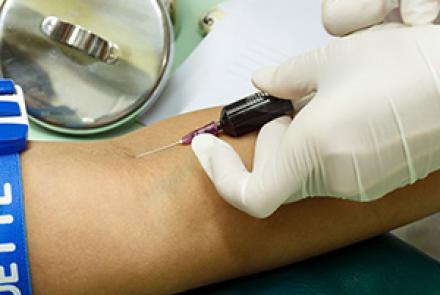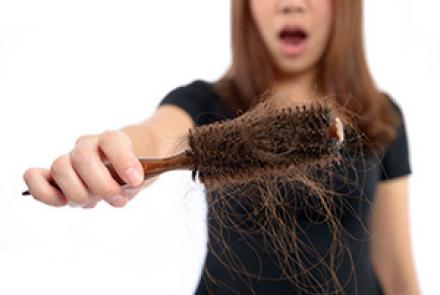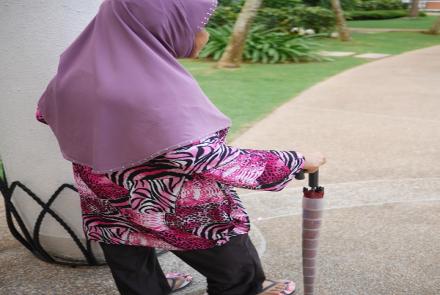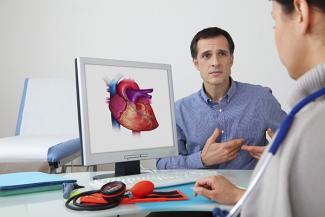
Dr. Snehil Mishra, Consultant Cardiologist, Hinduja Healthcare, gives us an overview of aortic stenosis predominantly a disease of the elderly and how TAVI has revolutionised treatment of heart valve disease.
Stenosis of the aortic valve is a common type of valvular heart disease in the elderly. What is aortic valve stenosis?
Aortic stenosis is a disease of one of the 4 major valves in the heart- the aortic valve. If the valve does not open fully, it will obstruct or restrict the flow of blood. This is called valve stenosis or narrowing. This puts extra strain on the heart, making it pump harder to force the blood past the narrowing.
What causes aortic valve stenosis?
Degenerative or age related calcification and fibrosis is the most common cause of aortic stenosis. Hence, it is most commonly seen in the elderly population. Other common causes include
i) a congenital or birth defect in the valve causing it to have two leaflets instead of three and
ii) Rheumatic fever and its sequelae.
What symptoms of aortic valve stenosis should prompt a person to seek immediate medical care?
Symptoms include -
- Fatigue
- Dizziness or Loss of consciousness
- Chest pain
- Palpitations
- Breathlessness
- Swelling of limbs and abdomen
If untreated, aortic stenosis can lead to weakening of the heart muscle, congestive heart failure, and death. Sudden cardiac death can be the first presentation of very severe aortic stenosis.
How is aortic stenosis diagnosed?
A detailed physical examination gives a clue to the presence of disease in most patients and the diagnosis is then confirmed by an ECG, X ray Chest, 2D Echocardiography and in few cases by Cardiac catheterisation.
Important: Understand the various Cardiac Tests
What are the treatment options for aortic valve stenosis?
The treatment is based on the severity of the disease and the patient’s symptoms:
- Regular Check-ups- If the tests suggest that the heart valve disease is mild to moderate, then lifestyle modifications and regular check ups for monitoring the disease usually suffice.
- Drugs- Aortic stenosis cannot be corrected with the help of drugs. But, the drugs may be helpful in controlling symptoms, reducing heart’s work load and in regulating the heart’s rhythm. At times they may be helpful in slowing the progression of the valve disease.
- Balloon valvuloplasty- This procedure requires insertion of a long tube (catheter) which has a balloon at its tip. This tube is entered into the heart through the groin region and the balloon is inflated once it reaches the valve. This procedure is usually effective only in younger patients or as a bridge to definitive surgery or in cases of medical emergency when surgery may take time to be arranged for or may not be immediately tolerated by the patient.
- Surgery- This is the definitive treatment for treating severe aortic stenosis and in patients who have complaints attributable to the disease. It involves replacement of the disease valve with an artificial metallic or animal tissue valve. This surgery can be minimally invasive or require an open heart approach. The recently developed minimally invasive options for correcting aortic stenosis is Transcatheter Aortic Heart Valve Implantation (TAVI)
Could you tell us about the new procedure the transcatheter aortic valve implantation (TAVI) that has emerged as an alternative treatment to open-heart surgery for valve replacement?
While open heart valve surgery is the traditional and still the gold standard treatment method for severe aortic stenosis, TAVI provides an option for those patients who may not qualify for an open heart approach based on their age, frailty or other medical conditions. It enables the placement of a balloon expandable aortic heart valve into the body via a catheter-based delivery system which can be inserted through the groin or a small nick in the chest. This procedure has now been done in thousands of patients worldwide and has been found to be as effective and durable as the open heart valve replacement in appropriately chosen patients.
What are the benefits and risks of this treatment?
Benefit - The single largest benefit of this treatment is that it is minimally invasive and hence it can be offered as an option for a significant subset of patients who were considered too high risk for open heart surgery. As this disease is fatal in most untreated symptomatic patients, TAVI offers hope for these patients with inoperable aortic stenosis. The other benefits are that patients may be discharged as early as 2-3 days after the procedure. Also, as there is no large surgical wound to be taken care of after the procedure, TAVI facilitates early resumption of daily routine activities.
Risks - The major risks involved include local complications like bleeding and swelling in the groin or damage to blood vessels of the groin or other large arteries, leak or dysfunction of the newly implanted valve, need for pacemaker implantation, stroke and rarely a tear in the large chamber of the heart known as the left ventricle.
How are the patients selected for this procedure?
A heart team comprising of a cardiac surgeon, cardiologist and sometimes the intensivist/ physician or a cardiac anaesthetist together define the risk for open heart surgery in a patient who needs valve replacement. This risk is defined by surgical scores which are universally acceptable as well as assessment of the patient’s fraility and life expectancy. Depending on this assessment, patients who are intermediate or high risk for surgery may be selected to undergo TAVI for their treatment.
How many TAVI procedures have been performed in India? What is its current status?
TAVI is a technique that has developed only in the last decade. The numbers in India are limited as the procedure is expensive and the expertise to perform it among doctors as well as the infrastructure to cater to it in hospitals is limited. Despite this, awareness of the procedure in the medical fraternity and the number of trained Indian doctors who can perform TAVI has greatly increased in the last couple of years leading to steadily increasing number of TAVIs being performed. Also, a made in India TAVI valve has recently been approved for use in patients and this has cut down the cost of the procedure which should enable it to become more affordable.
With the increasing geriatric population in India, do you think TAVI holds much promise for the future?
TAVI has revolutionised treatment of heart valve disease the world over. As India follows the trends of increasing geriatric population seen in the developed world and as aortic stenosis is predominantly a disease of the elderly who are quite often unfit to undergo major surgeries, the requirement for TAVIs is bound to keep increasing. Also, novel devices and further refinements in existing valves is making the procedure safer with every passing few years. Trials are now underway to test TAVI even in low surgical risk patients and if successful, the spectrum of patients who may be offered this option will widen further. Thus, TAVI definitely holds a lot of promise for safe and convenient treatment of thousand of deserving Indian patients in the future.
Reference
https://www.ncbi.nlm.nih.gov/pmc/articles/PMC4076458/

